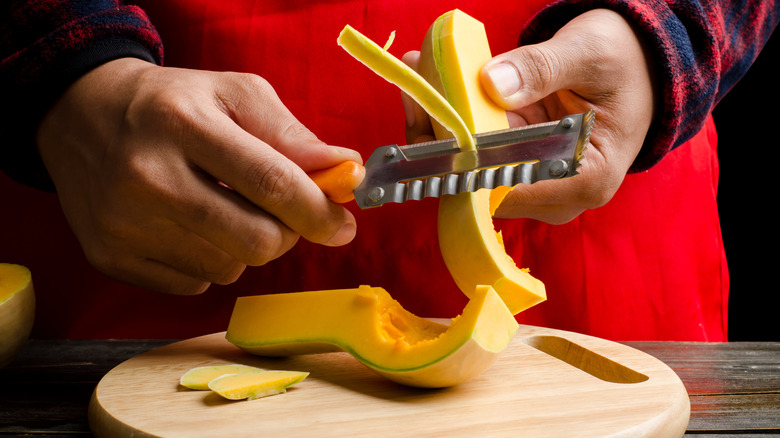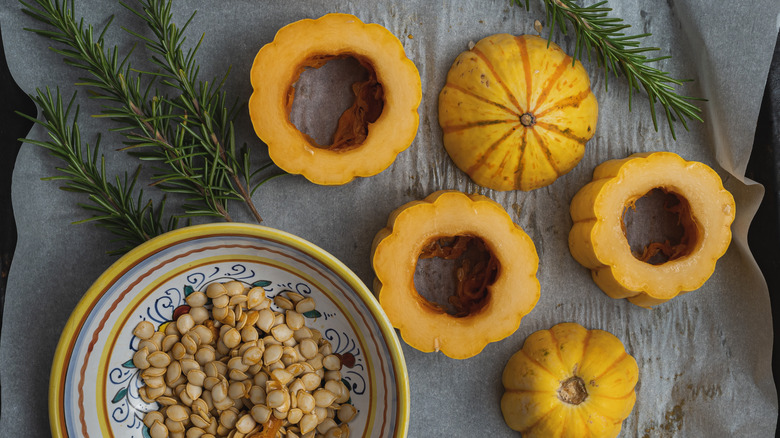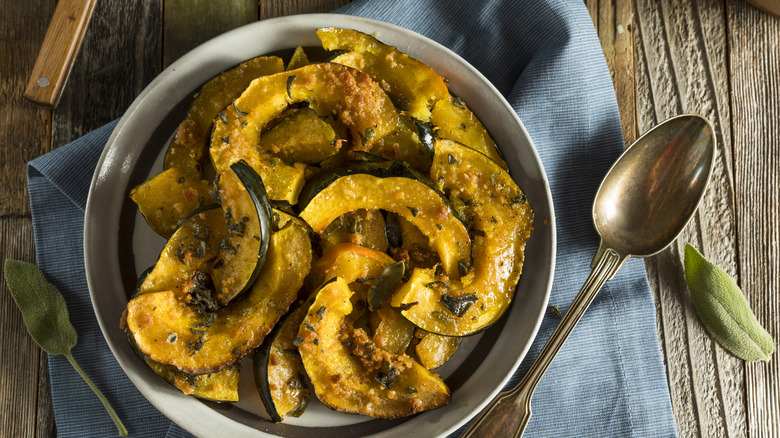Should You Be Eating The Skin On Squash?
Did you know squash is a fruit and not a vegetable? According to Healthline, from a botanical standpoint, a food is considered a fruit if it grows from the flowers of a plant and contains seeds — think tomatoes, cucumbers, and eggplants. Foods such as potatoes, carrots, and celery are classified as vegetables because they consist of stems, roots, and leaves.
The horticultural world gives us a wide variety of squashes, but there are only two types – summer squash and winter squash, and they all have edible skins. However, just because something is edible doesn't mean you should be eating it.
Summer squashes, such as zucchini and yellow squash, are perfect examples of the kinds of squash we're accustomed to eating unpeeled, while winter squashes that spend more time on the vine have a tough outer shell. This doesn't mean the skins of all winter squashes can't or shouldn't be eaten. A few varieties of winter squash have tender, edible skins that are delicious when left on the fruit.
Which type of winter squash skin should you consider eating?
To peel or not to peel
Bon Appétit says that three squash varieties should always be cooked: butternut, kuri, and kabocha. These types of squash have tough outer skin that stays that way no matter what cooking method you use, and these kinds should always be peeled. In contrast, other varieties of winter squash have very thin rinds and tender skins like delicata, acorn, and honeynut. These are perfect for eating without peeling.
All kinds of squash are high in nutrients, such as beta-carotene, magnesium, and manganese (via Food Revolution) and acorn squash contain more potassium than bananas (per WebMD). As an added bonus, leaving the skin on the fruit will add color and texture to a dish.
Peeling a slippery, bumpy squash isn't fun, but there's a method that takes the struggle out of the task. Simply cut the squash in half and bake it cut-side down on a baking sheet for an hour at 400 degrees or until a knife easily pierces the fruit. The result will be a soft flesh ready to use in all recipes. A similar method using the microwave will give you cooked squash in a fraction of the time and without heating your kitchen.
Wash that squash
Remember always to wash your squash whether or not you plan on eating it. The outside of the fruit can have pesticide residue or just grunge leftover from the farm or the trip to the market. When you don't wash the squash, once you cut into it, the dirt can get inside. A simple rinse with clean water is all you need to clean any vegetable effectively (per Nutrition Facts).
You can do other things using all parts of the squash through the Italian tradition of una cucina povera, or a no-waste kitchen. The peels can be added to vegetable stock, and Well+Good recommends turning them into crunchy snacks by coating them in oil and spices and baking them in the oven until they're crispy. Squash blossoms can be dipped in batter, stuffed, and fried, and make sure you save the seeds to roast separately for use as a crunchy, tasty garnish or to enjoy as a healthy snack.


